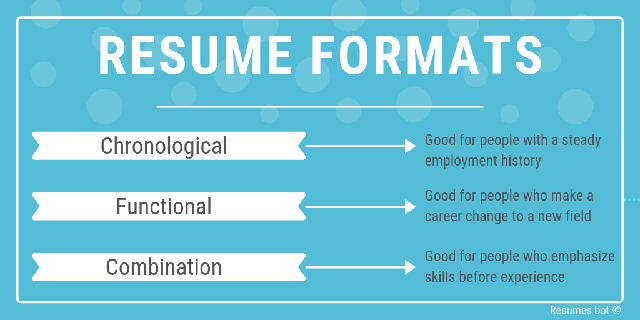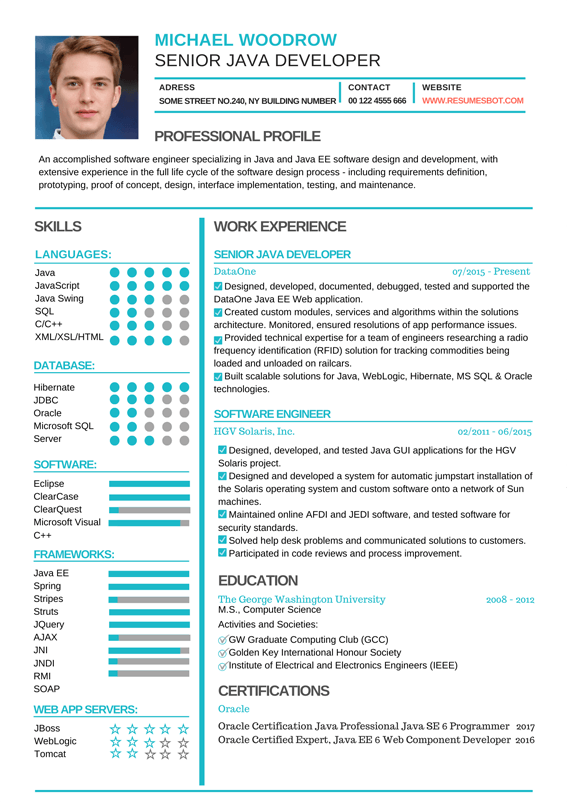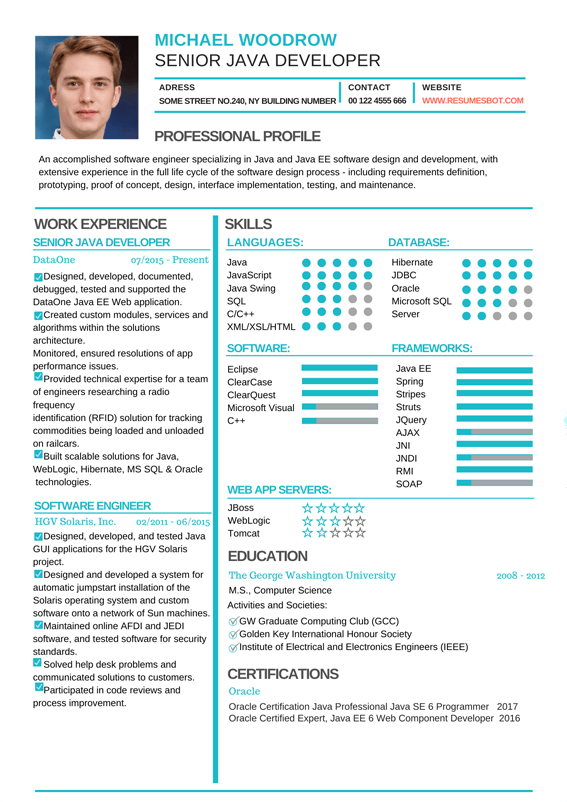Table of Contents
When you submit a resume to prospective employers, make sure that your job history reflects your most positive traits in a format that is accessible and easy to skim. With nearly half of currently employed people actively seeking better-paying jobs, you need a resume that stays at the top of the pile. The following formats can help make that happen.
What is the Best Resume Format?
The chronological resume format is the most widely used resume style among job seekers, according to the Bureau of Labor Statistics. Your prospective employers will be familiar with it and be able to skim through to glean the salient points.
Of the three main resume formats:
- Chronological
- Functional
- Combination
The best one for you depends upon the position you are applying for and what information you really want to emphasize. No matter which type you choose, using the proper resume format will give your job application a professional touch.

Chronological Resume Format
Because creating the right resume is key to communicating with hiring teams, choosing the chronological format may well get you a job interview. This type of resume is also known as a reverse-chronological resume. It spotlights your professional background and accomplishments.
This format is a good choice if you have a history of steady employment. Also, if you have consistently advanced within a single industry or career field, a chronological format highlights your stellar job history nicely.
- Contact information
- Resume objective or career summary
- Professional experience
- Key skills
- Education
- Additional sections
Chronological Resume Template

Expert Advice: Time is of the essence in a chronological list of jobs, you need not give exact dates for past employment. While you do list each job from most to least recent, just stating the month and year are sufficient for start and end dates. Also, it is not necessary to include your reason for leaving each job. Your interviewers will ask if they consider it relevant.
Functional Resume Format
A functional-style resume puts your skills and abilities up front. This is a top resume format if you already have experience in your career field and want to change employers and/or move up to a higher position.
You can also use a functional resume format if you have periods in your career when you were unemployed or working in a non-relevant field. The functional format can disguise gaps that a chronological listing cannot.
Another great feature of the functional format is the opening summary where you can immediately apprise employers of your most impressive qualifications.
- Contact information
- Resume objective
- Skills summary
- Additional skills
- Professional experience
- Education
- Additional sections
Functional Resume Template

Expert Advice: Unlike other resume formats, the functional template does not call for precise dates of employment, so you can focus more on what you have learned rather than how you have earned.
Combination Resume Format
This resume format draws elements from both the chronological and the functional styles. Like the functional format, the combination-style resume features your accomplishments and strengths at the top, just below your contact information and summary.
Like the chronological-style resume, your list of past employers is reverse-chronological as is your education history. This combination format works well if you do have a bit of professional experience post-college as well as pertinent skills and abilities you want to highlight.
- Contact information
- Skills summary
- Additional skills
- Professional experience
- Education
Expert Advice: Your educational history comes in as the bottom line of this type of resume, providing a big finish for your job bid. Since this is the final impression you make on a possible employer, make it count.
How to Choose Type of Resume Formats
Of course, the right resume format also depends upon the job opening you seek to fill. Here are a few guidelines for choosing one that helps you emphasize what is most important to a particular job description.
- You are on a steadily rising career path
- You keep accurate employment records
- You stay in touch with former bosses/coworkers who will give you a good recommendation
- You are just entering an industry
- You have time gaps in your work history
- Your previous jobs were in another industry
- You are a recent college graduate with unique skills
- You have work experience in diverse industries
- You are seeking a change of pace in your career
Resume Dos and Don’ts
When you are preparing to send your resume to an employer, be sure to:
- Fine-tune it so it suits the particular job opportunity
- Use one of the three top formats as a template
- Update it with up-to-the-minute data
- Let your references know that an employer may be in touch
- Pad it with inaccurate information
- Use your current company as a contact email or address
- Get too personal with your information
- Provide a list of past salaries
Hiring industry expert Robert Half emphasizes the importance of proofreading your resume. Good grammar and flawless spelling demonstrate your attention to detail.
A well-crafted resume is the base of your job search strategy. Don’t forget to write a cover letter and prepare for a job interview to make a good first impression.
Check out the most captivating cover letter examples.
